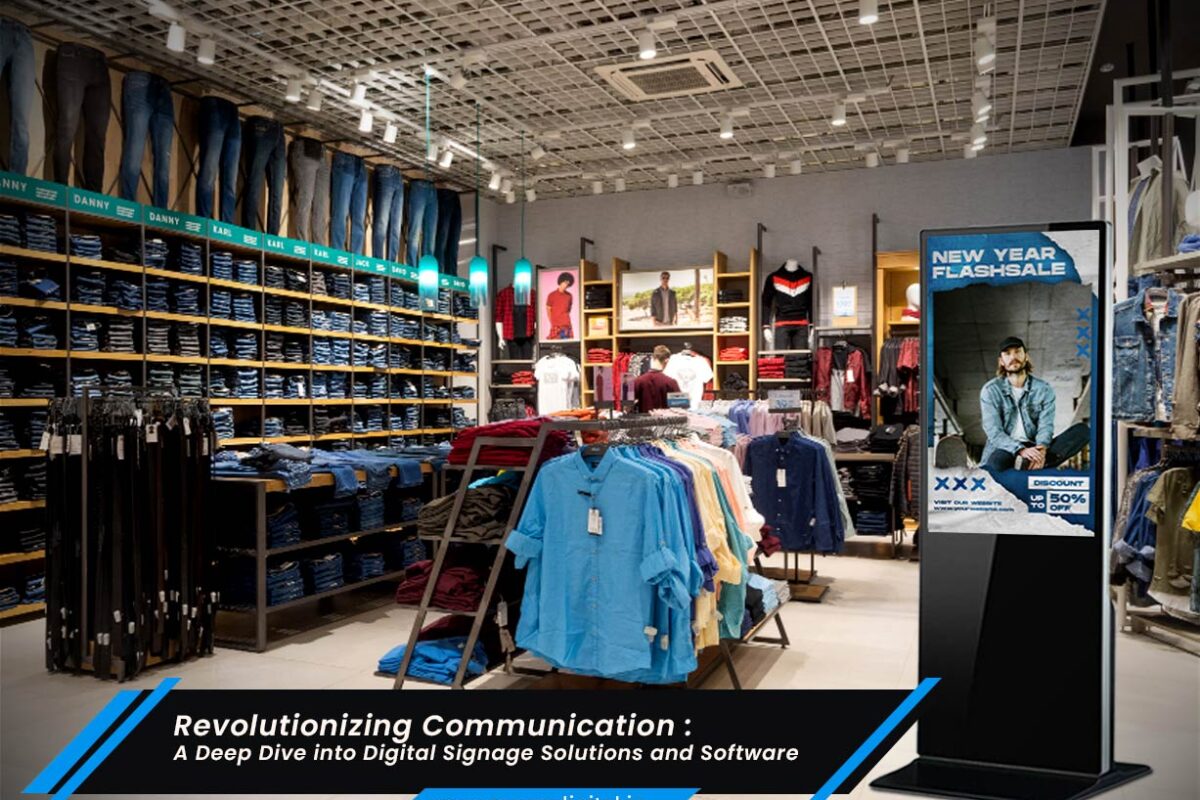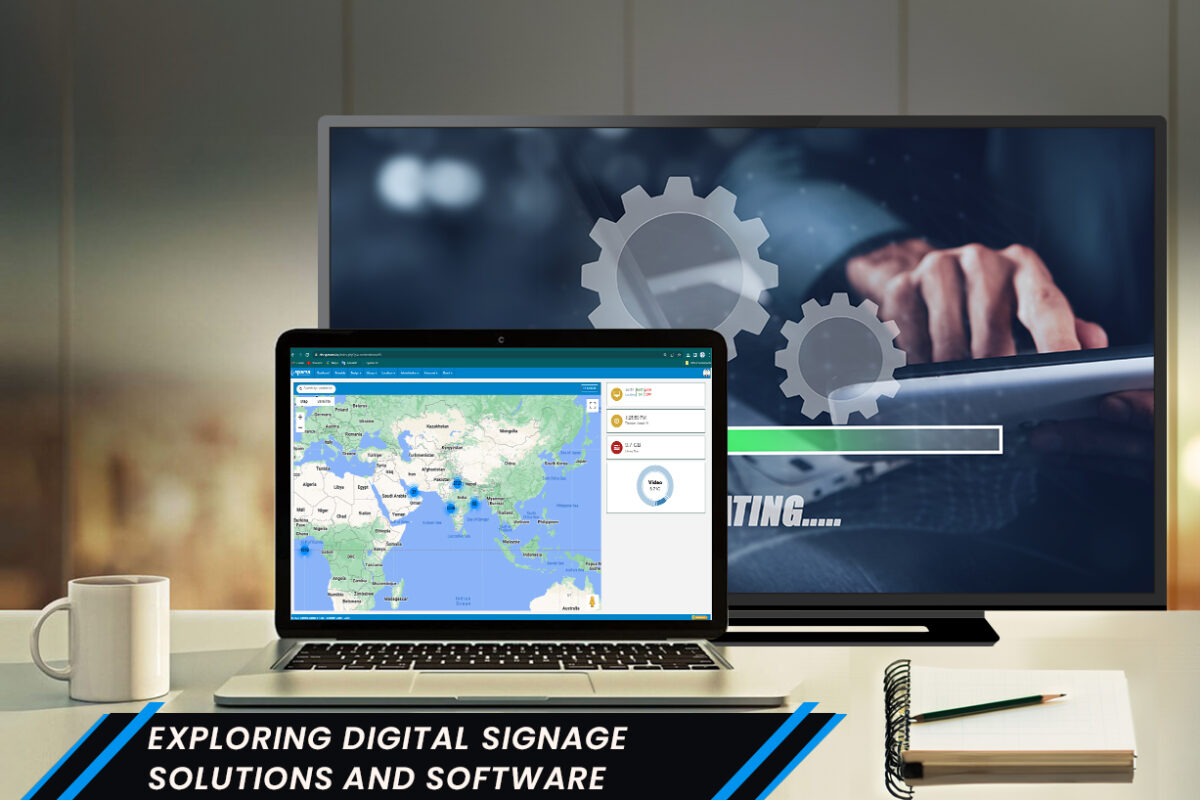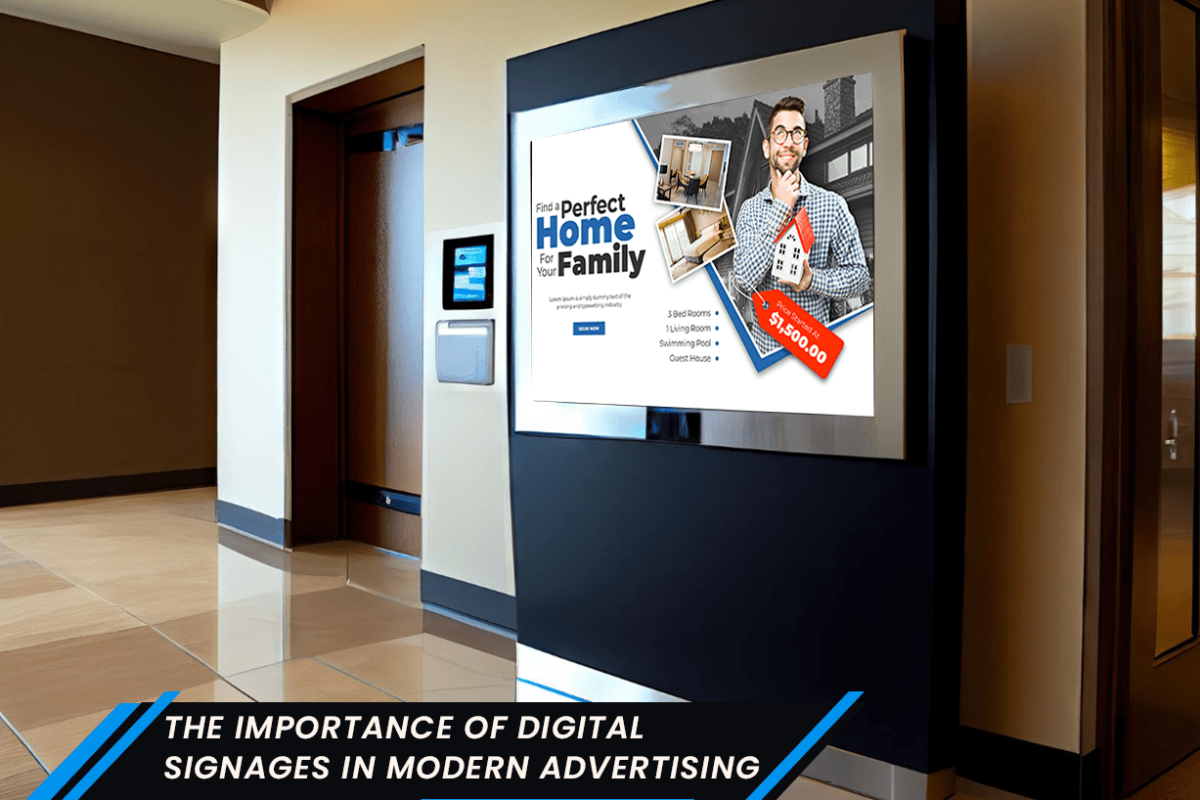In the modern corporate landscape, effective communication is essential for fostering productivity, collaboration, and employee engagement. Traditional methods of disseminating information, such as email newsletters and bulletin boards, often fall short in capturing the attention of today’s digitally savvy workforce. Enter digital signage for corporate offices, a dynamic and versatile communication tool that revolutionizes how organizations connect with their employees. In this blog, we explore the benefits, applications, and best practices of office digital signage, and how it can transform workplace communication.
Corporate offices serve as the nerve centers of organizations, where employees gather to collaborate, innovate, and drive business success. However, in large and bustling office environments, communicating effectively with employees can be a challenge. Traditional methods of communication, such as emails, memos, and printed posters, struggle to cut through the noise and capture the attention of busy employees.
Digital signage addresses the challenge by delivering timely, relevant information to employees through engaging displays across office touch points.
The Evolution of Office Digital Signage
The concept of digital signage in corporate offices has evolved rapidly in recent years, driven by advancements in display technology, content management systems, and integration capabilities. What began as static displays showing basic announcements and schedules has transformed into interactive and personalized communication hubs that cater to the diverse needs of today’s workforce.
Digital signage solutions for corporate offices encompass a wide range of applications, including:
Employee Communications:
Digital signage serves as a central hub for internal communications, delivering company news, updates, and announcements directly to employees. From CEO messages and departmental updates to HR policies and employee recognition programs, digital signage ensures that employees stay informed and engaged.
Wayfinding and Navigation:
In large office buildings with complex layouts, digital signage helps employees navigate the premises efficiently. Interactive wayfinding displays provide interactive maps, directions to meeting rooms, and real-time occupancy information, reducing confusion and improving productivity.
Meeting Room Management:
Digital signage outside meeting rooms streamlines the booking and management of meeting spaces. Employees can easily view room availability, book meetings on the spot, and check in for scheduled meetings using touch-enabled displays or mobile apps, enhancing efficiency and optimizing resource utilization.
Corporate Branding and Culture:
Digital signage reinforces corporate branding and culture by showcasing company values, mission statements, and employee achievements. Engaging content such as videos, graphics, and employee spotlights fosters a sense of belonging and pride among employees, strengthening organizational culture.
Safety and Emergency Notifications:
Digital signage plays a critical role in communicating safety protocols, emergency procedures, and evacuation routes to employees. In the event of an emergency, real-time alerts and instructions can be broadcasted instantly across all displays, ensuring swift and orderly response.
Benefits of Office Digital Signage
The adoption of digital signage in corporate offices offers numerous benefits for organizations and employees alike:
Enhanced Communication:
Digital signage provides a dynamic and visually engaging platform for delivering information, ensuring that messages capture the attention of employees and resonate with them. From important announcements to company updates, digital signage facilitates effective communication across the organization.
Improved Employee Engagement:
Interactive features such as touchscreens, QR code scanning, and social media integration encourage employee engagement and participation. Employees can interact with content, provide feedback, and collaborate with colleagues in real-time, fostering a sense of ownership and belonging.
Increased Productivity:
Digital signage streamlines workflows and reduces friction in everyday tasks, such as booking meeting rooms or finding colleagues. By providing instant access to relevant information and resources, digital signage empowers employees to work more efficiently and effectively.
Cost Savings:
While the initial investment in digital signage may seem significant, the long-term cost savings are substantial. Eliminating printing and distribution costs associated with traditional communication methods reduces operational expenses and environmental impact, leading to a more sustainable and cost-effective communication strategy.
Data-Driven Insights:
Digital signage platforms offer analytics tools and reporting dashboards that provide valuable insights into employee engagement and content performance. Organizations can track metrics such as display impressions, content dwell time, and user interactions to optimize content strategy and measure ROI.
Best Practices for Implementing Office Digital Signage
Successful implementation of office digital signage requires careful planning and execution. Here are some best practices to consider:
Define Objectives:
Clearly define the objectives and goals of your digital signage initiative, whether it’s improving internal communication, enhancing employee engagement, or optimizing workplace productivity. Aligning the project with strategic business objectives ensures that it delivers tangible value to the organization.
Engage Stakeholders:
Involve key stakeholders, including department heads, IT professionals, facilities managers, and employee representatives, in the planning and decision-making process. Collaborate closely with stakeholders to understand their requirements, gather feedback, and ensure buy-in for the project.
Choose the Right Hardware and Software:
Select digital signage hardware and software solutions that meet the specific needs and requirements of your organization. Consider factors such as display quality, scalability, content management capabilities, integration options, and ongoing support.
Develop Compelling Content:
Invest in high-quality content creation that is visually appealing, relevant, and engaging to employees. Leverage a mix of multimedia elements, i9ncluding videos, graphics, animations, and dynamic data feeds, to capture attention and convey messages effectively.
Deploy Strategically:
Strategically deploy digital signage displays in high-traffic areas where employees are likely to see them, such as lobbies, break rooms, hallways, and common areas. Consider the viewing angles, lighting conditions, and accessibility of each location to ensure optimal visibility and impact.
Train Users:
Provide comprehensive training and support to users responsible for managing and operating digital signage displays. Train them on content creation tools, scheduling software, troubleshooting procedures, and best practices for maximizing engagement.
Measure and Iterate:
Continuously monitor the performance of your digital signage initiative and gather feedback from users to identify areas for improvement. Use analytics data to track key metrics and KPIs, such as content engagement, user interactions, and display effectiveness. Iterate on your content strategy and deployment approach based on insights gathered from data analysis.
Conclusion
Office digital signage represents a powerful tool for enhancing workplace communication, collaboration, and productivity in corporate environments. Digital signage empowers organizations to connect effectively with their workforce, delivering timely information to drive business success.
While the adoption of office digital signage presents implementation challenges, the benefits in terms of enhanced communication, improved employee engagement, and increased productivity far outweigh the initial investment. As technology continues to evolve, the future of office digital signage holds tremendous potential for innovation and transformation, enabling organizations to create more connected, responsive, and dynamic workplaces. By embracing these emerging trends and best practices, organizations can unlock the full potential of office digital signage and empower their workforce to thrive in the digital age.





